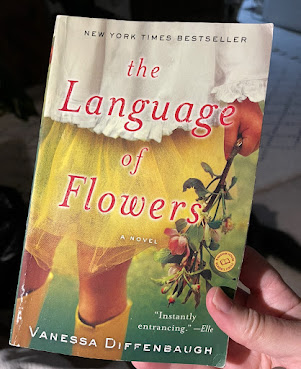The Language of Flowers
By Vanessa Diffenbaugh
I’ve always known that names carry meaning—but flowers? That
was new to me.
Take my name, Melissa, for example:
- In
Latin America, it’s associated with "honeybee," symbolizing
sweetness and industriousness.
- In
Italian culture, it’s linked to "beautiful flower" or
"sweet nectar," evoking delicate beauty and grace.
Right away, this book sparked my curiosity about the meaning
behind flowers and how deeply healing they can be.
Do you have a favorite flower? Do you know its meaning?
I have several, but I've always loved sunflowers. Their
meaning—unwavering faith, positivity, happiness, and optimism—perfectly
describes my mother.
Gerbera daisies hold a special place in my heart, too. An
old flame, Patrick, used to bring me one in a small glass Pellegrino bottle to
my office every week. Their meaning? Innocence, purity, and cheerfulness.
Sweet, right?
Then there are peonies—symbols of happiness, romance,
bashfulness, a happy marriage, honor, prosperity, good fortune, and wealth. I
might need to start buying them in bulk!
One of my favorite parts of this book—besides the fact that
it takes place in San Francisco (my favorite place on earth)—is the
"Victoria's Dictionary of Flowers" in the back. It inspired a new
goal: learning the language of flowers.
Where do you seek inspiration? It’s why I love reading, you
never know what you’ll discover.
This story unfolds in San Francisco, where I was lucky
enough to live for almost a decade.
One of my biggest questions throughout the book was: Why was
Victoria tolerated? Overall, she’s hard to like—angry, spiteful, bitter,
uncommunicative… a total misfit. She’s completely lost, yet somehow, people
show her so much grace. In hindsight, it’s refreshing to see people show up for
others, offering second and even third chances.
Victoria was bounced from foster home to foster home,
leaving her fragmented, untrusting, jobless, and homeless. The only thing she
cares about…flowers and their meanings.
When she goes to live with Elizabeth, she learns the
language of flowers, what each one represents. Later, Victoria becomes a
florist, but not just any florist. She doesn’t create arrangements just for
beauty—she crafts bouquets with purpose. Her customers turn to her to
mend relationships, find love, secure happiness, and reconnect with their
children.
A line from the book stuck with me: "Anyone can grow
into something beautiful."
So, let’s grow—who knew flowers had so much to say? I’m
ready to listen, to learn, to bloom.
Also… why isn’t her name Daisy, Lily, Rose, or even
Buttercup? Maybe I’ve been reading too many of those cheesy-easy books.
Ha!

I have this book on my bookshelf. I am going to read it now after reading your review! I bought it because I love flowers! Thanks for pushing me to pick this one up next! 🌸
ReplyDeleteLet me know what you think once you finish it!
ReplyDelete